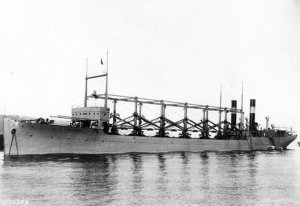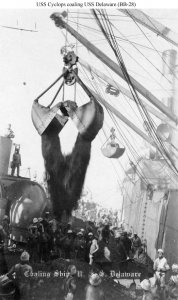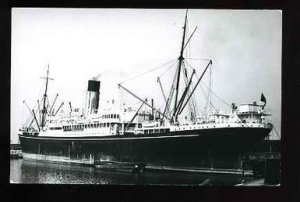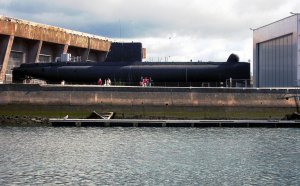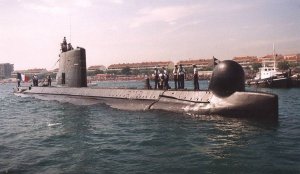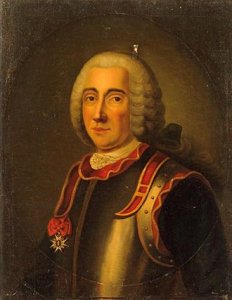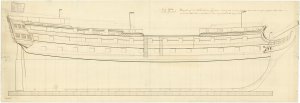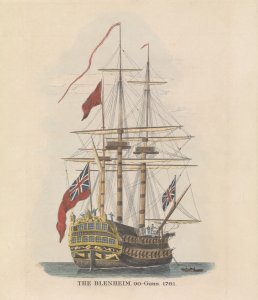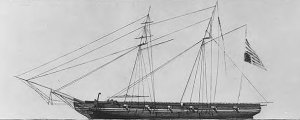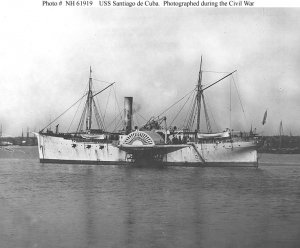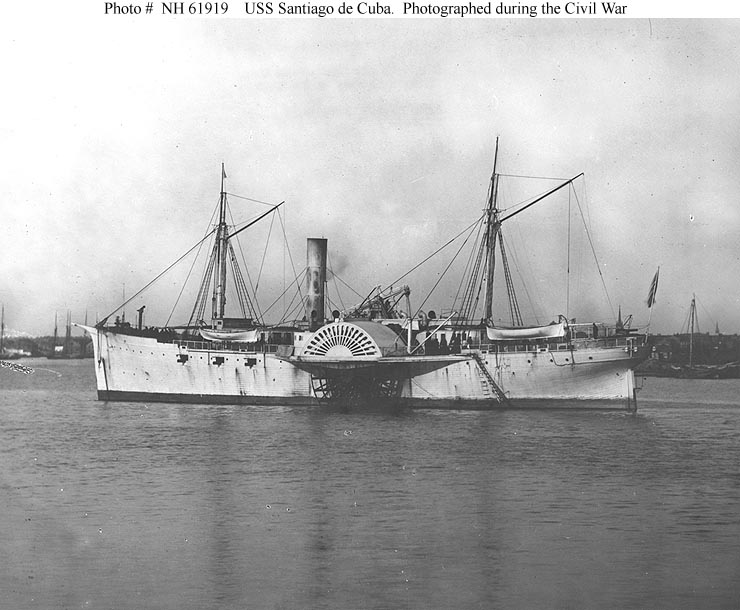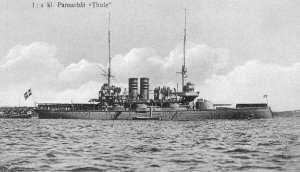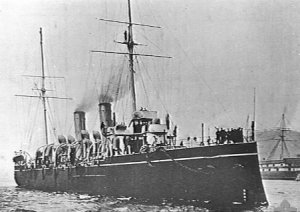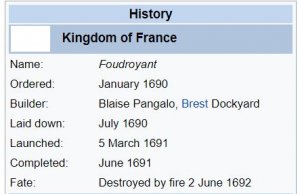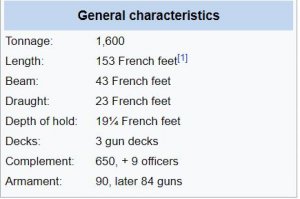Today in Naval History - Naval / Maritime Events in History
Other Events on 3 March
1698 – Launch of HMS Hampshire was a 50-gun fourth rate ship of the line of the Royal Navy
HMS Hampshire was a 50-gun fourth rate ship of the line of the Royal Navy, launched on 3 March 1698 at Nelson Dock, Rotherhithe.
Hampshire was broken up in 1739.
 en.wikipedia.org
en.wikipedia.org
1764 – Launch of HMS Asia was a 64-gun third-rate ship of the line of the Royal Navy,
HMS Asia was a 64-gun third-rate ship of the line of the Royal Navy, launched on 3 March 1764 at Portsmouth Dockyard. She participated in the American Revolutionary War and the capture of Martinique in 1794. She was broken up in 1804.
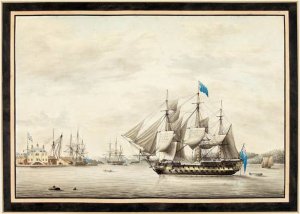
HMS Asia at the Halifax Naval Yard, 1797. Watercolour by George Gustavus Lennox, who was a lieutenant aboard Asia
Design
Sir Thomas Slade designed her as an experimental design, one that proved to be particularly groundbreaking as she was the first true 64. As a result, the Royal Navy ordered no further 60-gun ships but instead commissioned more 64 gun ships. Because these incorporated alterations learned from trials with Asia, for instance subsequent ships were bigger, she was the only ship of her draught (class).
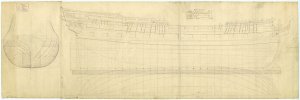
Scale: 1:48. Plan showing the body plan, sheer lines, and longitudinal half-breadth for 'Asia' (1764), a 64-gun Third Rate, two-decker. Note the undated alterations to the body plan and longitudinal half-breadth.

 en.wikipedia.org
en.wikipedia.org
1777 - The Continental brig Cabot comes under attack by the British frigate HMS Milford the first time and is run ashore on 28th March off the coast of Nova Scotia, becoming the first Continental navy ship captured by the British.
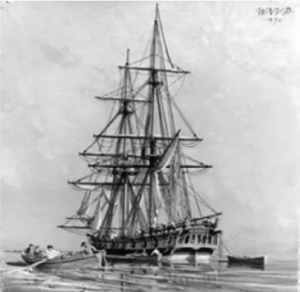
The first USS Cabot of the United States was a 14-gun brig, one of the first ships of the Continental Navy, and the first to be captured in the American Revolutionary War in the Battle off Yarmouth (1777).
HMS Milford was a 28-gun Coventry-class sixth-rate frigate of the Royal Navy. She was built at Milford by Richard Chitty and launched in 1759.[1] She was sold for breaking at Woolwich on 17 May 1785.
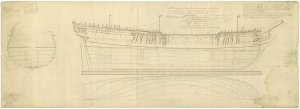
Scale 1:48. Plan showing the body plan, sheer lines with inboard detail, and longitudinal half breadth for Argo (1758), Active (1758), Aquilon (1758), Milfrord (1759), and later in 1758 for Guadeloupe (1763), and in 1764 for Carysfort (1766), then in 1782 for Laurel (cancelled 1783 and not built), and Hind (1785)a 28-gun, Sixth Rate Frigates.

 en.wikipedia.org
en.wikipedia.org

 en.wikipedia.org
en.wikipedia.org
1808 - Spain captures French 74-gun ship of the line Atlas, ex-Atalante, moored in Vigo as a hospital ship.
The Atalante was a 74-gun ship of the line of the Spanish Navy. She was acquired by France in 1801 and commissioned in the French Navy, being renamed to Atlas in 1803, serving in Santo Domingo and taking part in the Battle of Cape Finisterre. She was captured in Vigo at the outbreak of the Peninsular War.
Atalante was built in Cádiz and launched in 1754. In August 1801, on the background of the War of the Second Coalition, Spain ceded her to her ally France. Atalante was brought into French service and commissioned in Cádiz on 23 September 1801.
In April 1802, she transferred to Toulon. On 20 June 1802, Captain Lavillesgris took command and in August, she departed Toulon under to ferry troops to Santo Domingo, returning on 27 October. She performed another trip in January 1803, ferrying 750 soldiers and General Jean Sarrazin.
Atalante was renamed to Atlas on 4 February 1803. She took part in the Battle of Cape Finisterre under Captain Rolland, who sustained spectacular injuries when a powder reserve exploded near him.
Moored in Vigo as a hospital ship after the battle, she was captured there by the Spanish on 9 June 1808 after the outbreak of the Peninsular War.
 en.wikipedia.org
en.wikipedia.org
1824 HMS Dwarf (10), Lt. Nicholas Gould, wrecked after ran against the Pier in Kingstown Harbour.
1915 - The Office of Chief of Naval Operations (CNO) is established by Congress with Adm. William S. Benson named the first CNO.

 en.wikipedia.org
en.wikipedia.org
1942 - USS Perch (SS 176), after being depth-charged and irreparably damaged by Japanese destroyers Ushio and Sazanami, is scuttled by her crew in the Java Sea. All hands survive but are taken prisoner. Also on this date, USS Asheville (PG 21) is sunk by gunboat fire of Japanese destroyers Arashi and Nowaki south of Java.
https://en.wikipedia.org/wiki/USS_Perch_(SS-176)

 en.wikipedia.org
en.wikipedia.org
1943 - Teiyo Maru – On 3 March 1943, the transport was bombed and sunk by American and Australian aircraft south-east of Finschhafen, New Guinea during the Battle of the Bismarck Sea
Her commanding officer, seventeen crewmen and 1,880 troops were killed.
https://en.wikipedia.org/wiki/SS_Teiyo_Maru_(1924)
1943 - Oigawa Maru – On 3 March 1943, the transport was bombed and damaged by American and Australian aircraft south-east of Finschhafen, New Guinea during the Battle of the Bismarck Sea.
She was finished off that night by PT-143 and PT-150. Seventy-eight crewmen and 1,151 troops were killed.
https://en.wikipedia.org/wiki/Japanese_transport_Oigawa_Maru
1943 - Asashio – On 3 March 1943, in the Battle of the Bismarck Sea, the Japanese destroyer was sunk by an Allied air attack. After weathering the first waves, Asashio was bombed and strafed later in the day while attempting to rescue survivors from the destroyers Arashio and Nojima.
Arashio was lost with all 226 hands, about 45 nautical miles (83 km) southeast of Finschhafen, New Guinea.
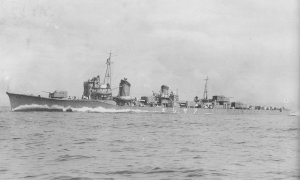
https://en.wikipedia.org/wiki/Japanese_destroyer_Asashio_(1936)
1943 - Taimei Maru – On 3 March 1943, in the Battle of the Bismarck Sea, the Japanese troop transport Taimei Maru was sunk by Allied aircraft. Of those aboard 200 were killed in the attack.
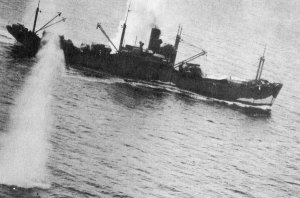
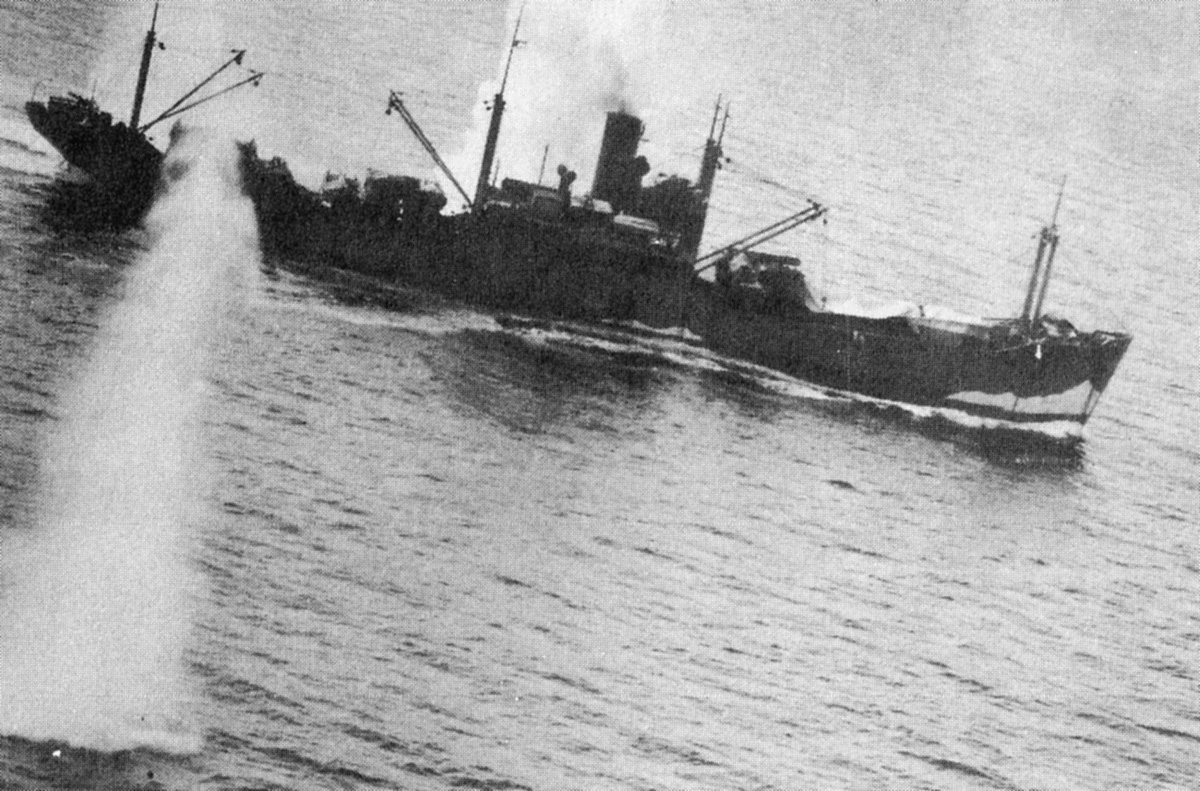
 en.wikipedia.org
en.wikipedia.org
1981 - The Mezada was lost 3 March 1981; The cargo ship sank in rough seas approximately 100 nautical miles (190 km) southeast of Bermuda. Eleven of 35 crew rescued.
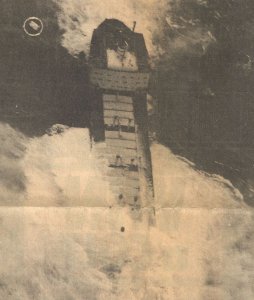

 en.wikipedia.org
en.wikipedia.org
Other Events on 3 March
1698 – Launch of HMS Hampshire was a 50-gun fourth rate ship of the line of the Royal Navy
HMS Hampshire was a 50-gun fourth rate ship of the line of the Royal Navy, launched on 3 March 1698 at Nelson Dock, Rotherhithe.
Hampshire was broken up in 1739.
HMS Hampshire (1698) - Wikipedia
1764 – Launch of HMS Asia was a 64-gun third-rate ship of the line of the Royal Navy,
HMS Asia was a 64-gun third-rate ship of the line of the Royal Navy, launched on 3 March 1764 at Portsmouth Dockyard. She participated in the American Revolutionary War and the capture of Martinique in 1794. She was broken up in 1804.

HMS Asia at the Halifax Naval Yard, 1797. Watercolour by George Gustavus Lennox, who was a lieutenant aboard Asia
Design
Sir Thomas Slade designed her as an experimental design, one that proved to be particularly groundbreaking as she was the first true 64. As a result, the Royal Navy ordered no further 60-gun ships but instead commissioned more 64 gun ships. Because these incorporated alterations learned from trials with Asia, for instance subsequent ships were bigger, she was the only ship of her draught (class).

Scale: 1:48. Plan showing the body plan, sheer lines, and longitudinal half-breadth for 'Asia' (1764), a 64-gun Third Rate, two-decker. Note the undated alterations to the body plan and longitudinal half-breadth.

HMS Asia (1764) - Wikipedia
1777 - The Continental brig Cabot comes under attack by the British frigate HMS Milford the first time and is run ashore on 28th March off the coast of Nova Scotia, becoming the first Continental navy ship captured by the British.

The first USS Cabot of the United States was a 14-gun brig, one of the first ships of the Continental Navy, and the first to be captured in the American Revolutionary War in the Battle off Yarmouth (1777).
HMS Milford was a 28-gun Coventry-class sixth-rate frigate of the Royal Navy. She was built at Milford by Richard Chitty and launched in 1759.[1] She was sold for breaking at Woolwich on 17 May 1785.

Scale 1:48. Plan showing the body plan, sheer lines with inboard detail, and longitudinal half breadth for Argo (1758), Active (1758), Aquilon (1758), Milfrord (1759), and later in 1758 for Guadeloupe (1763), and in 1764 for Carysfort (1766), then in 1782 for Laurel (cancelled 1783 and not built), and Hind (1785)a 28-gun, Sixth Rate Frigates.

HMS Milford (1759) - Wikipedia

USS Cabot (1775) - Wikipedia
1808 - Spain captures French 74-gun ship of the line Atlas, ex-Atalante, moored in Vigo as a hospital ship.
The Atalante was a 74-gun ship of the line of the Spanish Navy. She was acquired by France in 1801 and commissioned in the French Navy, being renamed to Atlas in 1803, serving in Santo Domingo and taking part in the Battle of Cape Finisterre. She was captured in Vigo at the outbreak of the Peninsular War.
Atalante was built in Cádiz and launched in 1754. In August 1801, on the background of the War of the Second Coalition, Spain ceded her to her ally France. Atalante was brought into French service and commissioned in Cádiz on 23 September 1801.
In April 1802, she transferred to Toulon. On 20 June 1802, Captain Lavillesgris took command and in August, she departed Toulon under to ferry troops to Santo Domingo, returning on 27 October. She performed another trip in January 1803, ferrying 750 soldiers and General Jean Sarrazin.
Atalante was renamed to Atlas on 4 February 1803. She took part in the Battle of Cape Finisterre under Captain Rolland, who sustained spectacular injuries when a powder reserve exploded near him.
Moored in Vigo as a hospital ship after the battle, she was captured there by the Spanish on 9 June 1808 after the outbreak of the Peninsular War.
French ship Atlas (1801) - Wikipedia
1824 HMS Dwarf (10), Lt. Nicholas Gould, wrecked after ran against the Pier in Kingstown Harbour.
1915 - The Office of Chief of Naval Operations (CNO) is established by Congress with Adm. William S. Benson named the first CNO.

Chief of Naval Operations - Wikipedia
1942 - USS Perch (SS 176), after being depth-charged and irreparably damaged by Japanese destroyers Ushio and Sazanami, is scuttled by her crew in the Java Sea. All hands survive but are taken prisoner. Also on this date, USS Asheville (PG 21) is sunk by gunboat fire of Japanese destroyers Arashi and Nowaki south of Java.
https://en.wikipedia.org/wiki/USS_Perch_(SS-176)

USS Asheville (PG-21) - Wikipedia
1943 - Teiyo Maru – On 3 March 1943, the transport was bombed and sunk by American and Australian aircraft south-east of Finschhafen, New Guinea during the Battle of the Bismarck Sea
Her commanding officer, seventeen crewmen and 1,880 troops were killed.
https://en.wikipedia.org/wiki/SS_Teiyo_Maru_(1924)
1943 - Oigawa Maru – On 3 March 1943, the transport was bombed and damaged by American and Australian aircraft south-east of Finschhafen, New Guinea during the Battle of the Bismarck Sea.
She was finished off that night by PT-143 and PT-150. Seventy-eight crewmen and 1,151 troops were killed.
https://en.wikipedia.org/wiki/Japanese_transport_Oigawa_Maru
1943 - Asashio – On 3 March 1943, in the Battle of the Bismarck Sea, the Japanese destroyer was sunk by an Allied air attack. After weathering the first waves, Asashio was bombed and strafed later in the day while attempting to rescue survivors from the destroyers Arashio and Nojima.
Arashio was lost with all 226 hands, about 45 nautical miles (83 km) southeast of Finschhafen, New Guinea.

https://en.wikipedia.org/wiki/Japanese_destroyer_Asashio_(1936)
1943 - Taimei Maru – On 3 March 1943, in the Battle of the Bismarck Sea, the Japanese troop transport Taimei Maru was sunk by Allied aircraft. Of those aboard 200 were killed in the attack.


Taimei Maru (1936) - Wikipedia
1981 - The Mezada was lost 3 March 1981; The cargo ship sank in rough seas approximately 100 nautical miles (190 km) southeast of Bermuda. Eleven of 35 crew rescued.






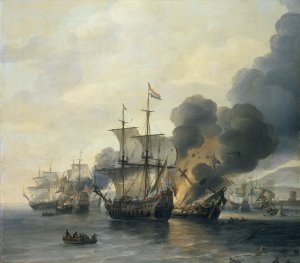
 , who has made the alternative suggestion that it may in fact be by Aernout Smit (1641-1710), though further comparative work remains to be done on the matter. Since Smit could only have painted such a view retrospectively for age reasons, this may explain the apparent confusion of ships, which van Diest (before 1610 - after 1663) is perhaps less likely to have made. [see notebook field: amended PvdM 3/13]
, who has made the alternative suggestion that it may in fact be by Aernout Smit (1641-1710), though further comparative work remains to be done on the matter. Since Smit could only have painted such a view retrospectively for age reasons, this may explain the apparent confusion of ships, which van Diest (before 1610 - after 1663) is perhaps less likely to have made. [see notebook field: amended PvdM 3/13]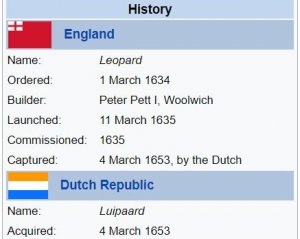
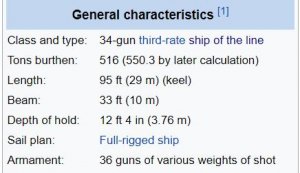
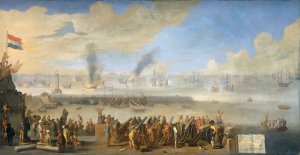
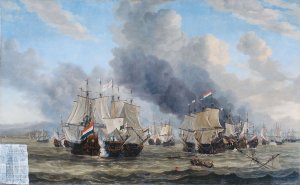
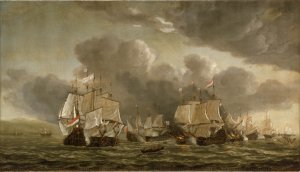


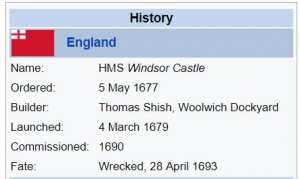
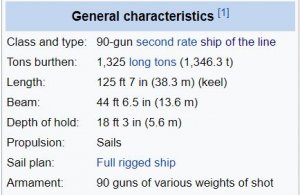
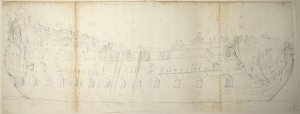
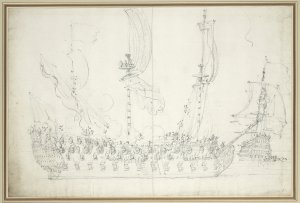
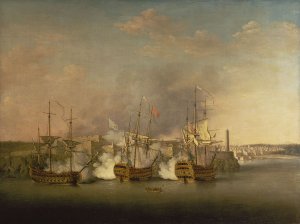
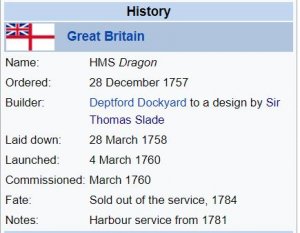
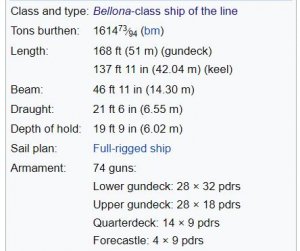
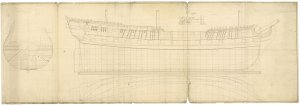
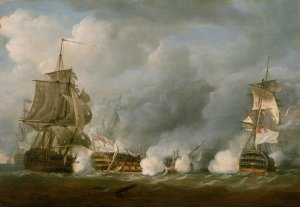
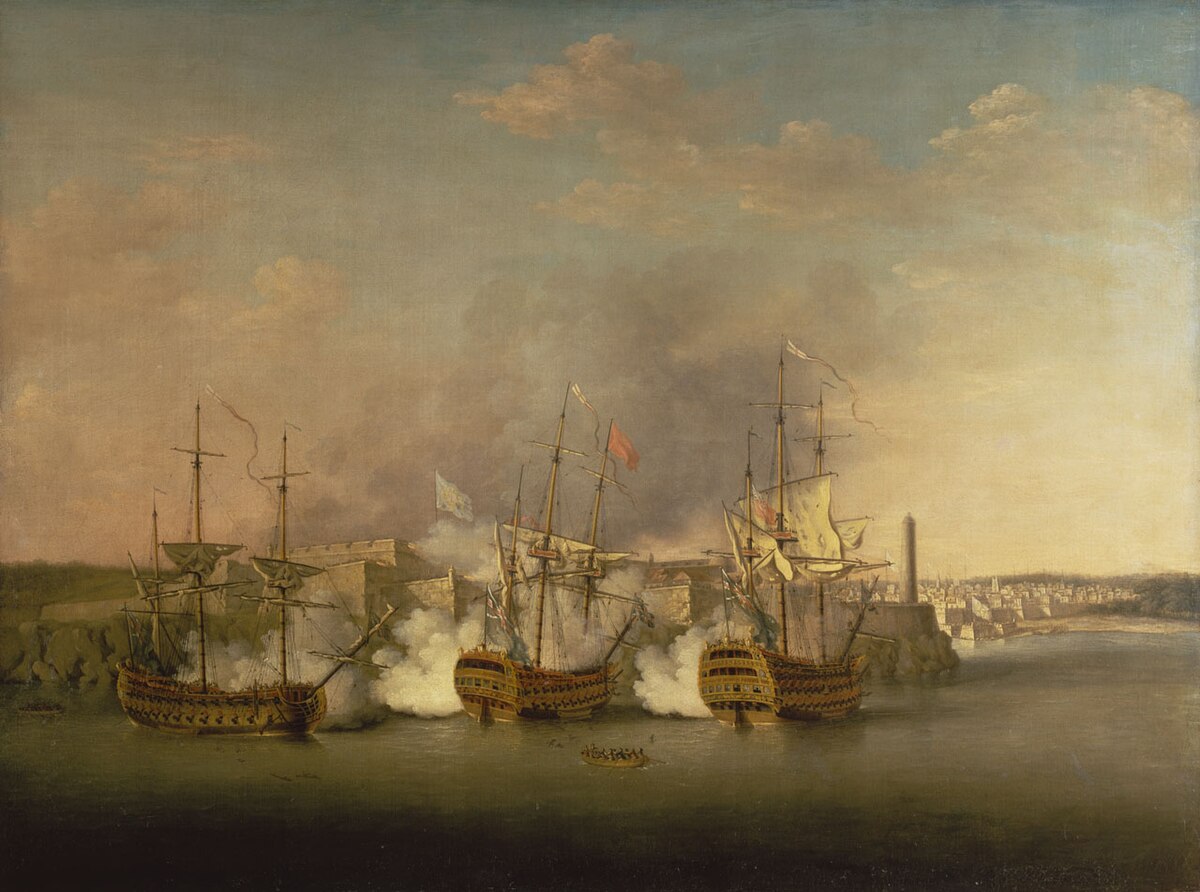
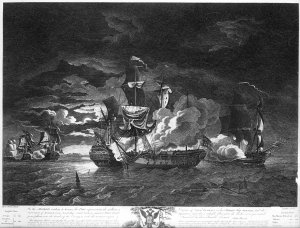
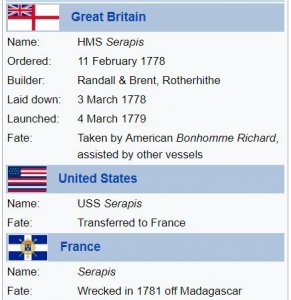
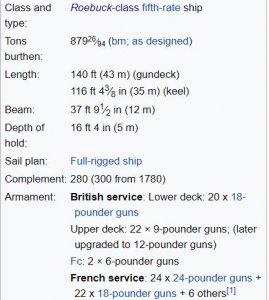
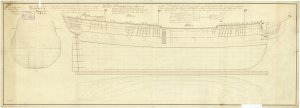

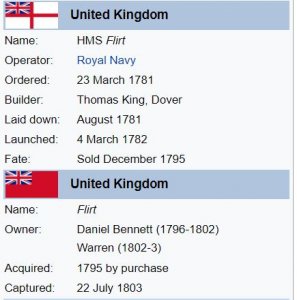
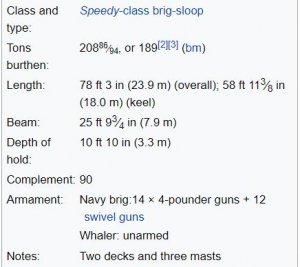
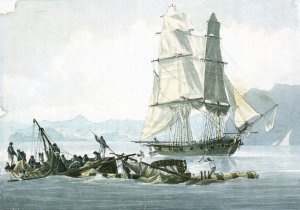
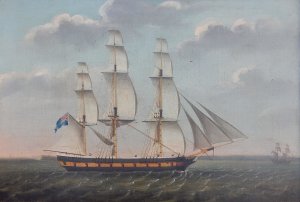
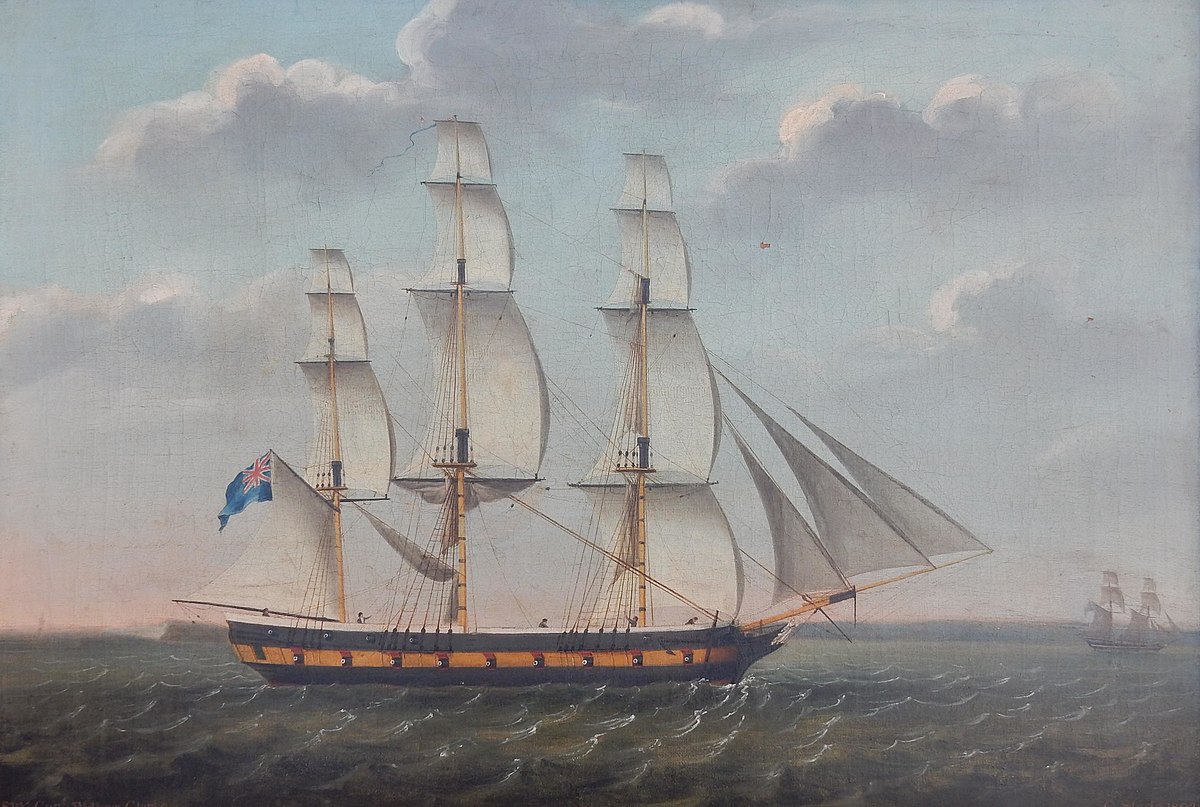
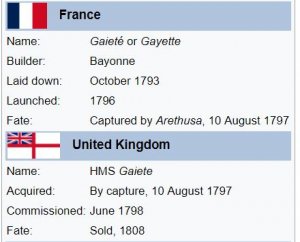
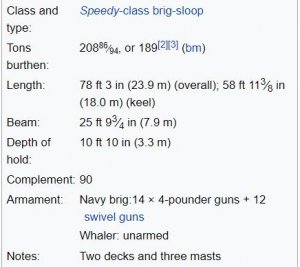
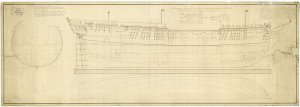

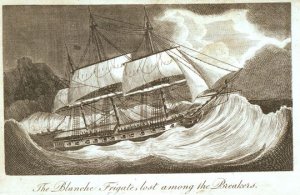



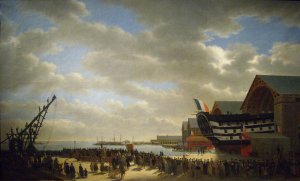
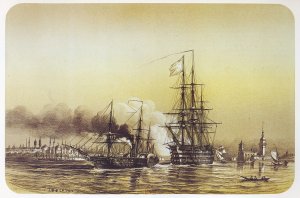
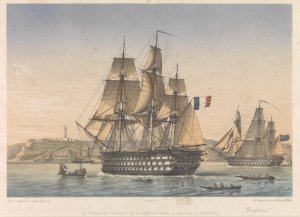
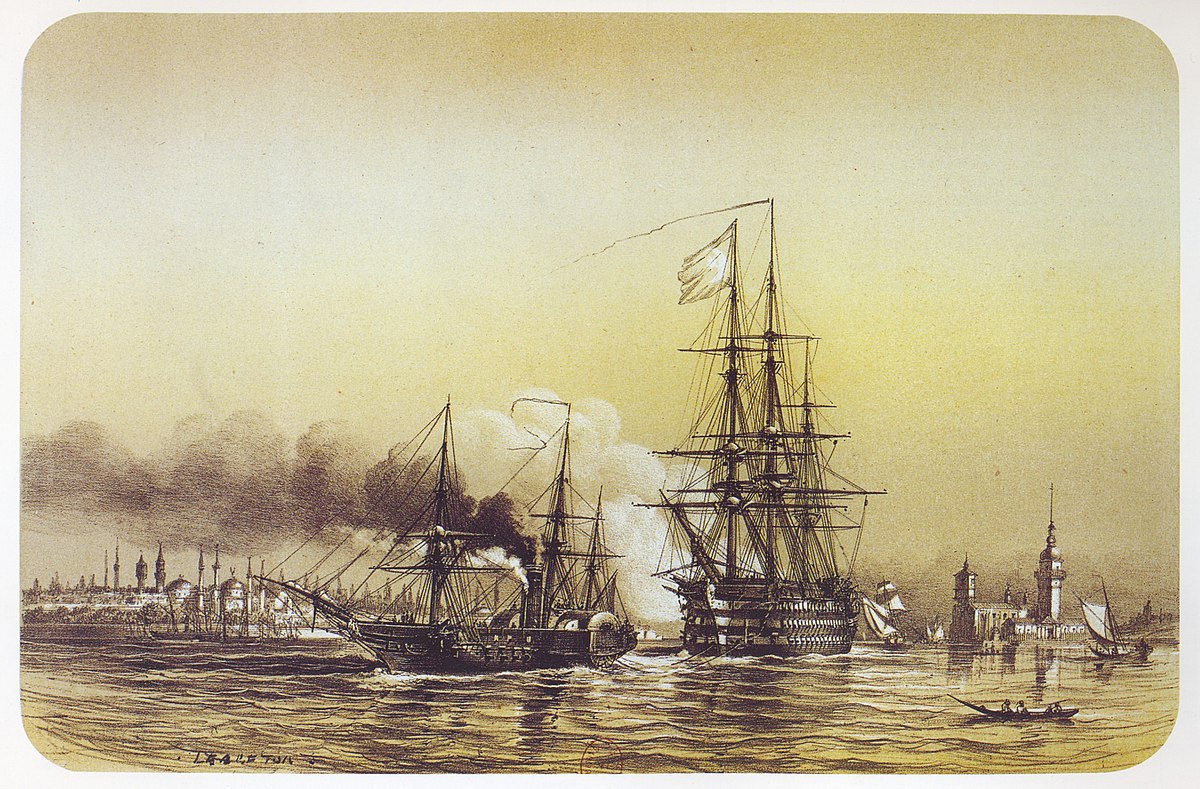

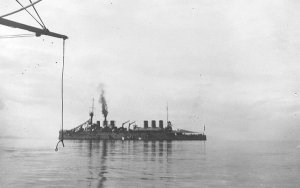
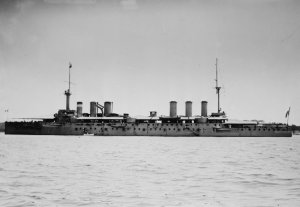
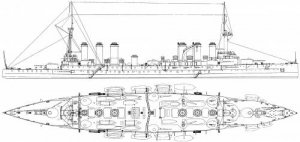
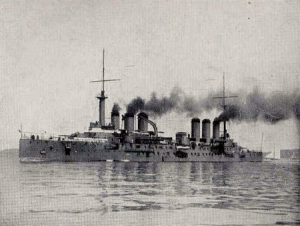

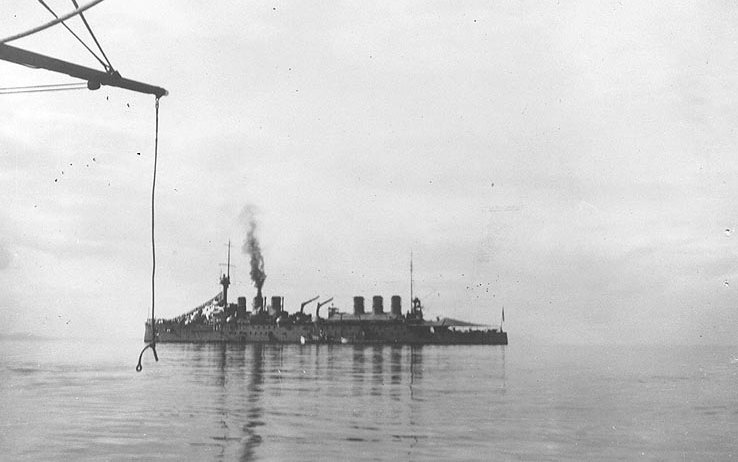

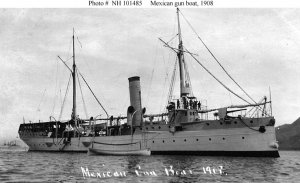
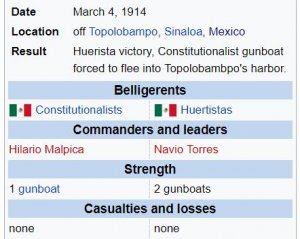
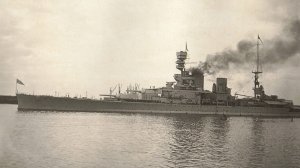
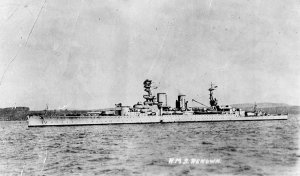

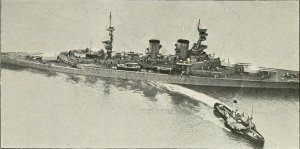
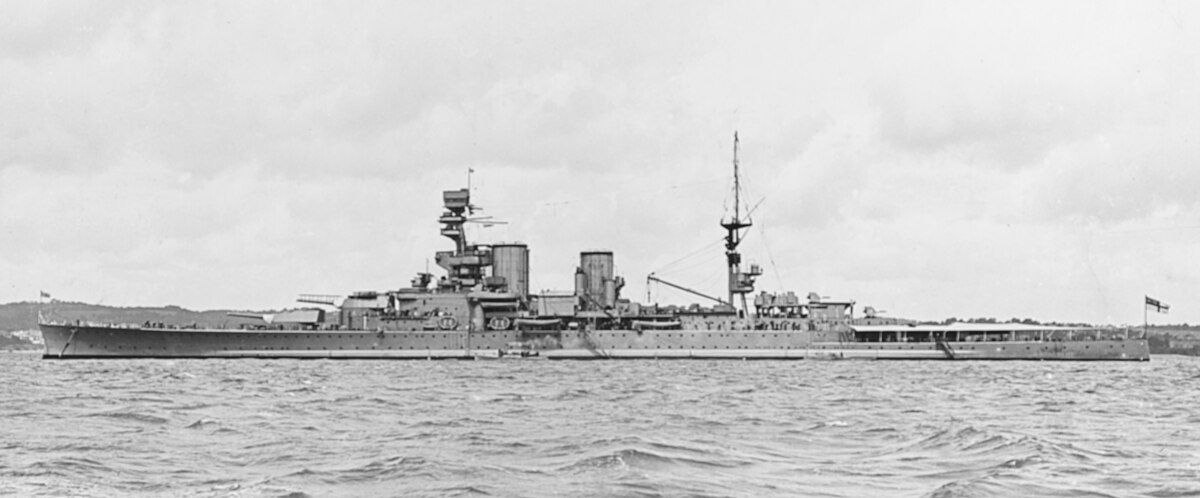
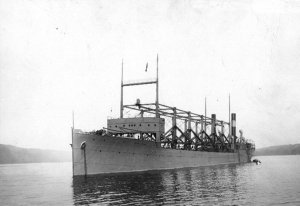
 ed in the Hudson River, off New York City.
ed in the Hudson River, off New York City.